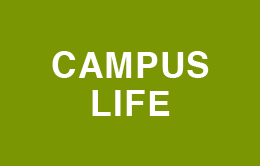
Rethinking paper as a packaging material to ensure truly low environmental impact
Formulating design guidelines to solve issues in the manufacturing process
| Department of Business Design and Management (CSE Graduate School) Master’s program 2nd year |
| Yuning Chen |
| Masahiko Munechika Laboratory |

Reconsidering paper-based materials from the standpoint of quality improvement and environmental preservation
Q Tell us about your current research.
I have been researching design guidelines for paper-based food packaging materials in the field of quality management. In recent years, many companies have been required to take steps to reduce their environmental impact.
A particular area of interest in this regard are paper-based material. Paper is often used as packaging material to enclose tea leaves, coffee and similar items. Many products use a combination of paper and film, with paper often being sandwiched between layers of film so that in many cases it does not even appear to paper at first glance.
The paper mark is mandatory for packaging if paper materials account for 50% or more of raw materials. Generally speaking, products bearing the paper mark are actively sought after by companies as they are thought to help reduce environmental impact.
However, the question of whether paper-based products are really reducing a company’s environmental impact requires serious consideration. I considered three scenarios where paper materials were used in different proportions and assessed environmental impact in each case, verifying CO2 emissions across the entire life cycle, from raw material procurement to final disposal. As a result, I came to the conclusion that, when CO2 emissions of paper-based packaging were low but the amount of paper used was higher than necessary, its environmental impact could actually exceed that of plastic products, and that materials whose composition does not warrant the paper mark were necessary.
The Munechika Laboratory actively engages in joint research
Q Tell us about the characteristics and the general atmosphere of the Munechika Lab.
Almost all students in the Munechika Laboratory are engaged in joint research with corporate entities. Being able to conduct research together with a company while still a student is a big draw, and the know-how gained through research can be used later in your career. Professor Munechika is kind and funny and often goes out to dinner with his students. Older students are also very friendly and there is no sense of hierarchy. Besides studying, we also have a lot of personal exchanges, like organizing bowling tournaments and similar activities.
Q What message do you have for international students applying to Waseda University?
At Waseda there is a wide variety of learning opportunities that extend well beyond the classroom, for example through academic conferences and joint research. In such an environment, having interpersonal connections and building relationships of trust is an invaluable experience. All your classmates, seniors, and teachers are kind and supportive, so it’s the perfect environment for you to challenge yourself.

